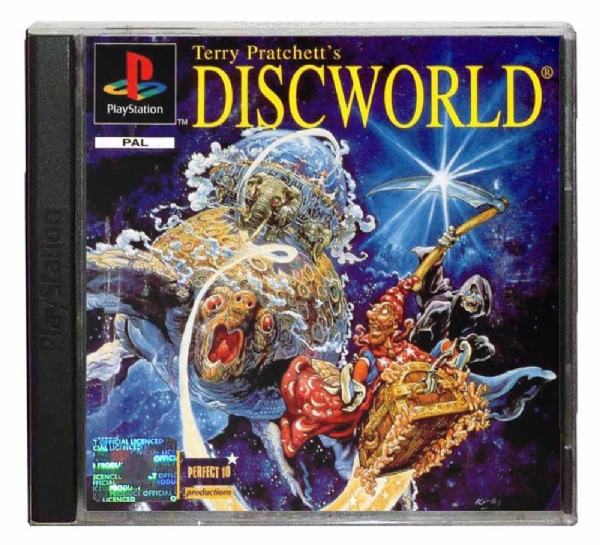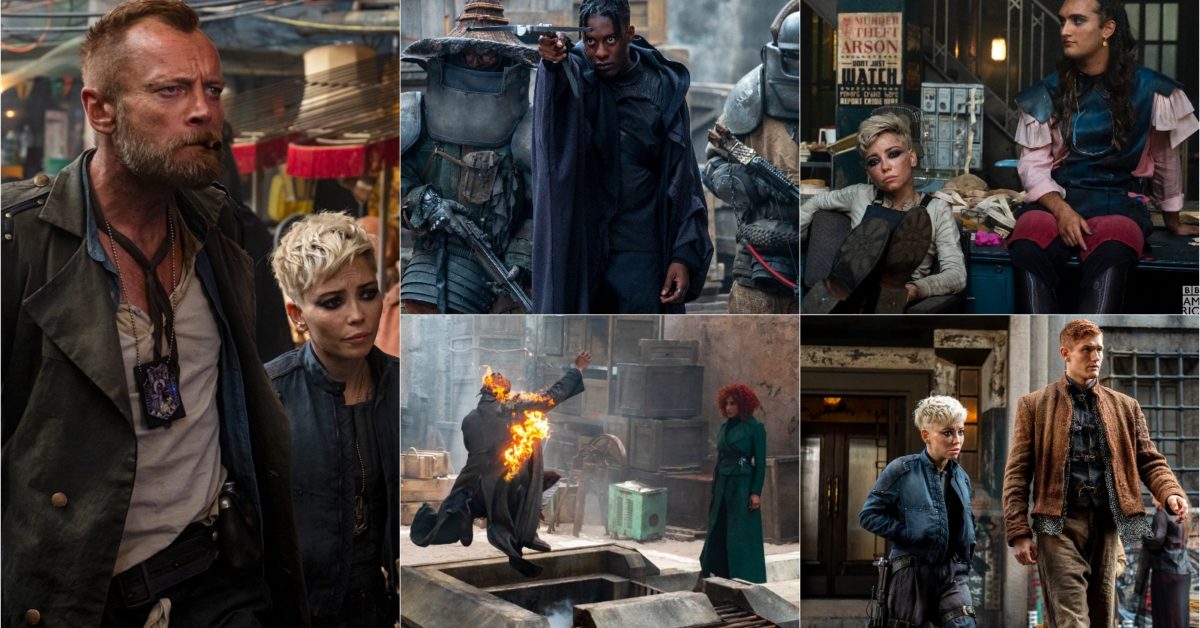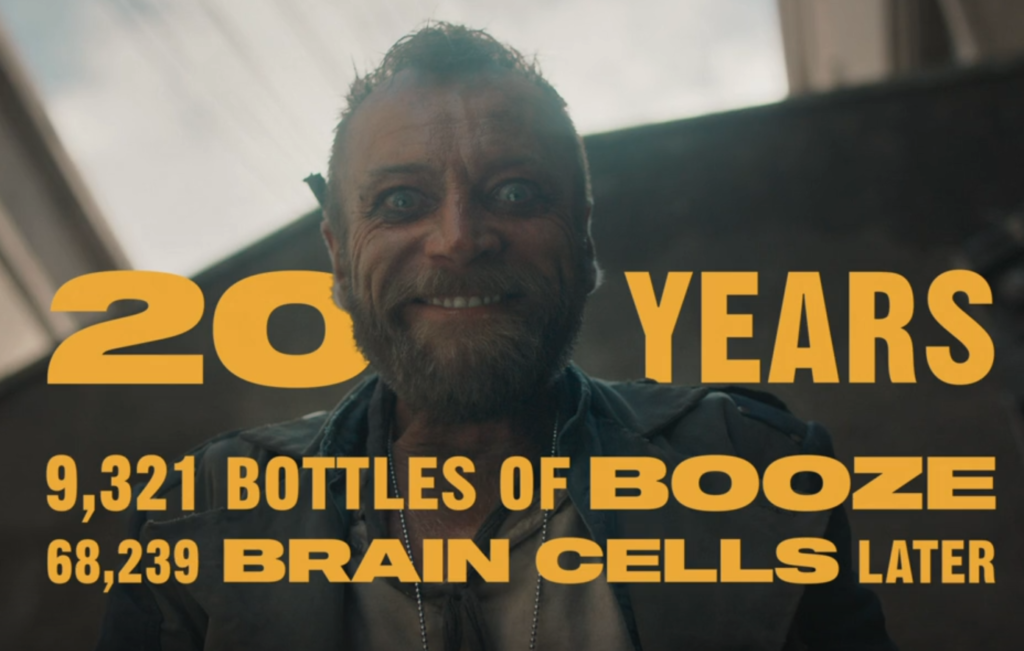My first brush with the Discworld must have been around 1996, perhaps 97 – when my horrified mother dragged me off to our local equivalent of Blockbuster to return the copy of Mortal Kombat 3 I’d rented for the weekend, because apparently hyper-violent arcade games with depictions of dismemberment isn’t suitable entertainment to an 8-year-old. In retrospect, she might have had a point. While we were returning the game, she asked some people there what might be more suitable for a child my age, someone recommended Discworld.

At the time, my English proficiency was poor, making it a confusing and honestly disappointing experience. Did I mention I was 8?
A second beginning
A few years later, somewhere in the early 2000s, I had my 2nd exposure to Discworld, this time, a 2nd-cousin decided to lend me his copy of The Color of Magic, admittedly it was a Norwegian translation and much of what makes Discworld so amazing is lost in translation, plus Terry had hardly found his voice on the first book, but it was definitely interesting enough to stick in the back of my mind.

A few years later, probably around 2005 – my then girlfriend was looking to read something new, and I recommended the series to her. I had only read the first book myself, but she got hooked. Our relationship didn’t last very long, but within the year I had picked up one of the Novels in it’s original English from a bookstore – not knowing publication order or being familiar with any of the recommended reading order charts, I started off with The Last Continent, and I thoroughly enjoyed it.

Fast forward about a decade and a half, and I’m a seasoned Discworld-enthusiast. I like the Sky adaptations of Hogfather, Going Postal and The Color of Magic, and I really thought the Amazon adaptation of Good Omens – a non Discworld book co-written by Terry Pratchett and Neil Gaiman – was very well done, and despite some changes, remained true to the source material, this is probably because Neil Gaiman was directly involved in the project. By this time, Terry had passed away and couldn’t be involved himself, but I really think Neil and the rest of the crew did right by him.

The Watch
A few years ago now, I started hearing chatter about a new show being developed, which would base itself on the novels concerning themselves with the ankh morpork city watch, and would be a sort of “CSI Ankh-Morpork” type of show. Being a storyline drawing heavily on cop dramas and film noir, it makes complete sense to create a show like this. You get the unique chance to play with fantastical elements while delivering a suspenseful narrative and deep social commentary. So I was as giddy as a child for Christmas. To see a more mature take on Ankh Morpork, depictions of it’s underbelly, and introducing my beloved Discworld universe to an even wider audience. Something I could watch with people I’ve recommended the series to, but never bothered to pick up a book.
The Watch, by B.S Johnson
Among many colorful characters on the disc, there once was a fellow by the name of Bergholt Stuttley Johnson, B.S Johnson for short. He had a unique talent for designs that never quite worked as intended. Among his achievements were a maze so small people got lost looking for it, the collapsed tower of Quirm – built out of quicksand because he wanted to do it fast, salt and pepper shakers large enough to be used as grain silos, and a manicure machine now used as a potato peeler.
For his unusual contributions to Discworld society, B.S Johnson was nicknamed “Bloody Stupid Johnson”, and rightly so.

Meanwhile here on Roundworld, as the inhabitants of the Disc call us, we have our own incarnation of B.S Johnson – Simon Allen. BBC America owned the rights to the show The Watch, and they allowed Simon to get his grubby hipster mittens all over Terry’s literary legacy, and for no apparent reason – except perhaps trying to be artistic and modernize things, perhaps he mistakenly thought he had something interesting to say – he imposed himself on an established universe by a beloved author, with a huge and dedicated fanbase – and turned it into this filthy abomination

Among a myriad of unnecessary changes that add nothing of value whatsoever, we have a lot of pointless swappings of genders, species, professions, introduction orders, personality types and more. Two central characters to the watch are just cut out of the story altogether, the character of Sam Vimes changed beyond recognition from a tough but fair street-wise slum kid – now a stoic police captain who does what’s right even when it’s hard – is now a breathtakingly unintelligent party-animal with no substance. His nemesis, Carcer Dun is now portrayed as Vimes’ old friend who saved him from the streets. This perversion of the Night Watch novel quite frankly turns my stomach.

I can’t properly express my distaste for what has been done to The Watch, but I can genuinely say it feels like the show-runner has gone out of his way to defile Terry’s work. I imagine this is how the family of an Egyptian pharaoh would feel if they knew grave robbers would one day dig up their loved one, so he could be unrolled for entertainment at mummy-parties.

To Simon Allen, I would remind you of words found in Reaper Man, as I think you were derelict in your duty to treat the source material with due respect and care.
